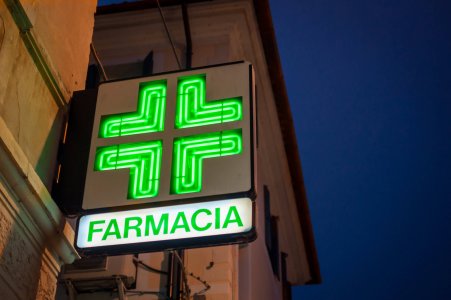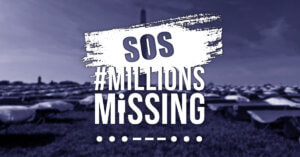RETURN TO PART 1 OF THIS SERIES HERE
ME/CFS ON THE ITALIAN TV SCREEN: A VIRTUOUS MODEL
by Giada Da Ros
Through sundry television spaces (news, fiction, talk shows), the ME/CFS community challenged existing political, medical, and philosophical approaches to the illness (and to maladies in general). The community sought to re-appropriate the discourse, fight against stigma and prejudice, disseminate health knowledge, and create medical credibility and patient visibility for a still underestimated, under-addressed and under-funded condition.
Italy, my own country, was part of the conversation using unique sets, settings, and genres. I will demonstrate this through the experiences of Professor Tirelli and myself, as a patient and as president of the CFS Italian Association (now CFS/ME Italian Association). In this case, the genre was the talk show. Therefore the approach used was first and foremost a verbal one – medical knowledge can here be only expressed via words, not images – and “illness is constructed, reproduced and perpetuated through language” (Torkkola, 23). This genre also has specific features that act as intensifiers: its proximity; that is, the emphasis of the daily dimension, of a near-by reality; its conviviality, the rhetorical insistence of the value of “being together”; its flux, with a syncretism of styles and tones and enunciation modalities, between the seriousness of the information and the levity of the context (Grasso and Scaglioni, 234).
Were you to ask an older Italian patient who had received a diagnosis of ME/CFS where they first heard of it, there is a good chance they’d answer that they did from Professor Tirelli on the Maurizio Costanzo Show (1982-present).
Professor Tirelli is a specialist in oncology, hematology and infectious diseases who at the time was Chief of Oncology at the National Cancer Institute of Aviano, one of the best hospitals in the country (Tirelli). He was the leading Italian physician on this topic with many publications in the field. He was part of the group that created the Fukuda criteria for diagnosing CFS in 1994, which replaced the first case definition known as the Holmes criteria of 1988, adopted by the CDC (USA) – at present the Fukuda criteria have been replaced by the Institute of Medicine criteria of 2015. He appeared as a guest on many TV shows, medical and non-medical, speaking about cancer, HIV and AIDS, tobacco, flu shots and was the first in Italy to talk about ME/CFS (at the time called CFS). He appeared on the aforementioned show twenty-five times from 1993 to 2021.
The Maurizio Costanzo Show was simply the late-night talk show in Italy. The physical place from which it airs is a theatrical stage, historically the Parioli Theatre in Rome (though other locations were also used). It is an encounter-conversation talk show in which several people talk and interact with one another. On the stage, guests are put on a horizontal plane in front of an audience while the host, perched on a stool, moves from one guest to another, conducting the conversation and weaving a story.
We are led to a few observations.
What we perceive here is, first of all, the reliability of the source of information. We are not in a medical context at all; yet on stage there is both a competent expert and a trusted “demiurge” host who further legitimizes content. The two reinforce each other’s credibility. Also, as Costanzo understands his program, a television show is a liturgical act, like saying mass, with its repetitive structure and his “sacred” role as mediator. The architecture of the space allows for a coded range of expressive possibilities that ethno-cultural traditions have taught us how to read and assess. TV uses these architectural symbols to structure the relationship with the present audience and consequently with the audience at home (Caprettini, 32). We intuitively understand that if the space is separated in half, a part is reserved for those who officiate the rite (Costanzo, Tirelli), another to those who take part (the audience in the theatre as well as at home). Putting it simply, the architecture of the space creates positions indicative of expertise versus participation: therefore, the medical information is to be trusted.
At the same time, the language used is accessible, not hypertechnical. Professor Tirelli shared how he discovered CFS by chance, reading about it on the cover of Newsweek (Nov 12, 1990) and being surprised that he had not known about it, given his status as a well-prepared professional. He went on to explain how he began studying the condition and eventually wrote an article for a magazine. The response was overwhelming: so many suffering people wrote in that the editors of the magazines started forwarding him patients. Though in the beginning he didn’t want to deal with them because he was already too busy with the patients he had, he would of course explain the symptoms and, anticipating the suspicious reaction, he would clarify that one starts to better understand the situation when they think about how one feels when they have the flu all the time. Professor Tirelli was unfazed by the absence of a diagnostic test; after all, we can all get a very bad cold and feel miserable because of it, and nothing would show up on a blood test because of it.
He drew on his extensive experience with AIDS patients, explaining that at the beginning of that crisis the situation was quite similar. People in that case were dying, so it was easier to believe that something was wrong; but there were no tests, no proof, no drugs, and doctors had to operate the same way, attempting to ease the patient’s suffering while at the same time trying to figure out what was really going on. He remarked that CFS patients, otherwise active and productive, would become unable to work or go to school, and how fatigue in general was underestimated. In his long career as an oncologist, he saw that fatigue was one of the more disabling symptoms in cancer patients.
Finally, Professor Tirelli elaborated on an easy rule of thumb to distinguish depression from CFS: in the former, people don’t want to do activities, and as soon as they do, they feel better; with the latter it’s the opposite: patients want to do things but crash and get worse.
Despite enduring skepticism, including among Professor Tirelli’s colleagues, patients went to his practice in droves, and the CFS Italian Association’s phones rang constantly after one of his appearances at the Costanzo Show. Salient health information and possible objections were presented in a relaxed, un-medicalized setting, thus reaching an audience that might not have looked for this kind of topic otherwise and proposing a model of medicine that prioritizes the reality of the condition of the patient. Possible stigma and prejudice were met head-on and nipped in the bud by relying on the credibility of the source (both medical and televisual).
Similar principles from the patient’s perspective can be found in I Fatti Vostri (Rai2, 1990– present). This is a daytime show with heterogeneous segments. The talk part is a lengthy encounter-interview with a dialogic (host and guest) or trilogic (host and two guests) character. The physical space is particularly significant because it trusts the metalinguistic knowledge of the viewer to interpret the special scheme presented on the TV screen as it is intended. Here, the set design represents an Italian piazza. The open-space urban living room that “metaphorically transforms itself in a welcoming hug for whomever crosses it” (Jennifer) has a strong social role in the culture of Bel Paese, invoking both the originally-intended, welcoming nature of the piazza as well as its long history, imparting a sense of belonging and identity. A piazza is a place for all kinds of moods and activities, both serious and frivolous. On set, surrounded by mock-up buildings of a typical Italian town, the audience is seated at café tables behind the speakers, who are front and center. Here, common people tell their stories.
On May 14, 1999, these people are me, my sister, and the host, Massimo Giletti (see it here and here).
Prompted by the agreed-upon questions, I tell my story. Journalism experts on health communications (Grignolio) teach us that data doesn’t change minds: stories do. Telling people about our own experiences is more convincing than presenting facts and figures, or technical information. Following in part a classic pattern of this kind of narrative (a before and an after, a change), I personalize the disease, I become the face of it. The setting reinforces what this television genre does: it builds communicative rapports and encourages an empathetic relationship with the viewer at home and its vicarious television representation, the audience in the studio, “putting a face” on the problem (Grasso, 104). The host, inviting my sister for her input, insists on the harshest details: me confined to my bed 24/7, just staring at the ceiling; me being a wreck, unable to process stimuli; the anguish of my family. A co-host plays devil’s advocate, asking if a psychological cause has been ruled out. It’s what is criticized as “pain TV,” insisting on the worst aspects of someone’s experiences. I was also previously asked not to smile, something I do as a habit in life, to elicit an emotional response in the audience. So be it: the harrowing story came through. Tools for outreach were recommended – in a time before web pages, making this more challenging. “Televideo” (a teletext service broadcast on national TV) was also recommended to ensure accessibility to everyone. Visibility on a national level was achieved.
It is widely acknowledged that first-person narratives are laden with “ideology”, a “world of values”, because “they involve the organization of symbols that have implications for what people perceive and what they do in social relations” (Wren, 81). Part of that “ideology” in this case was the awareness of the criteria used in diagnosis that are consciously used as a framework for the story one relates about oneself. That was one of my first interviews on the topic. In subsequent interviews, such as one on a local Trieste station, Trieste in Diretta (Telequattro, 27 May 2014), I followed the “script” of the case definition criteria much more closely. It is present here, but in a more fluid way, somehow.
How I tell my story, and from what examples and experiences I draw, changed over time according to changes in the accepted case definition. I believe I have become much better at telling it with time: the experience may be less fresh, but I am more aware of the reality of the disease and even have analyzed my own experience further. On I Fatti Vostri I was feeling far worse than I would have admitted, than I let on, or was able to convey.
A couple of days before, in preparing for my guest appearance, I had been asked to write half a page with the bulk of my story. I was disabled enough to not be able to do it myself in the allotted time, and therefore my sister had to write it for me. Behind the scenes, I was not able to stay sitting, I had to lie down. We were accommodated at a hotel the night before. The trip was grueling enough for me. I couldn’t make it to the restaurant inside the hotel to eat, so I ordered something to be brought to my room. Despite all this, I appear fine on screen. What would have been far more interesting is what was not seen; that is what television should be able to show and usually does not. In watching the episode, you can see how I swing back and forth a little, holding my knee. To a keen eye knowledgeable about the disease, this indicates orthostatic intolerance on my part, something that now would be addressed but wasn’t at the time. I didn’t have the awareness to report it, as it was not a symptom that had yet been mentioned in case definitions.
The context also dictates what you’re allowed to say. To explain brain fog in subsequent interviews, I often described how I had just started to write as a TV critic when I got sick. I had to write one review a week for my column, but I was only able to watch that one program by dividing it in small segments: watch for 4 minutes, then rest half an hour, watch for 2 more minutes, then rest 10, watch for 15 minutes then rest an hour. My mind couldn’t follow otherwise, because my speed for processing information was too slow. It took me 12 years before I was able to watch a movie in one sitting. Furthermore, because I was not able to sit at the computer, I had to dictate my article to my father, who would then print it out and take it to the weekly paper for which I used to write. This is the story, the personal, the symptom made real. In this case, however, I wasn’t allowed to include this, or to expand on the topic of cognitive impairment, because the conversation was diverted elsewhere. This allows us to reflect on other aspects of the communication of illness.
What is medically relevant when the conversation moves away from medical spaces? I was too sick to have any kind of social life. I had told the production that I had never had a boyfriend and I asserted that I didn’t want to speak about that topic, and I was promised that they would not ask me about it. Live, during the time slot meant to speak about other symptoms of the disease, the host said that he assumed I had previously led a normal life with boyfriends and so on and asked about the importance of love in my situation. At the time, I was annoyed that I had been blindsided, and replied that the love and support of my family and friends was extremely important. In the end, despite the form it assumed here, speaking about health issues in these spaces makes the social and personal aspects of being sick very relevant. In this case me not being able to have a love-sex relationship was significant and worth discussing, an important part of my being disabled. Social isolation is, after all, something ME/CFS patients frequently experience. It is worth exploring because these television genres are not just interested in disease (the one covered by the biomedical approach), but in illness (the objective health state as identified by the patient) and sickness (the social identity of the disease); and opening up about the whole reality of the consequences of a condition is enlightening, creating relatability and evoking empathy. It communicates information about a malady more holistically, something for which advocates strive. There is a popular online joke to which ME/CFS patients feel a connection. It depicts a doctor saying “Don’t confuse your Google search with my six years of medical school,” to which the patient replies, “Don’t confuse the one-hour lecture you had on my condition with my 20 years of living with it.” Physicians have their experiences and competence, patients have theirs, and one doesn’t invalidate the other. This, following the lead of Professor Tirelli, was the dual approach the CFS/ME Italian Association tried to keep in TV interviews. If possible, whenever a physician was contacted, a patient was included, and vice versa. A good example of this is the episode of Unomattina (1986 – present), aired on 28th March 2002, where Professor Tirelli sat on the couch of the “living room” of the well-known morning show with two patients, Tiziana Donato and me. The journalist directed questions to all of us, asking each for our point of view, in order to create a shared space, a shared aim to inform about the condition, a shared purpose to fight it. This is a virtuous model: doctors and patients are a team.
Works cited
Caprettini, Gian Paolo. 2001. Totem e Tv. Cronache del’immaginario televisivo. Roma: Maltemi Editore.
Grasso, Aldo and Massimo Scaglioni. 2003. Che cos’è la televisione. Milano: Garzanti.
Grasso, Aldo. 2011. Prima lezione sulla televisione. Bari: Laterza.
Grignolio, Andrea. 2018. ‘Etica e deontologia della comunicazione scientifica’. In Il Valore del farmaco, il valore della cura. Series of lectures to journalists, held in Rome on February 15.
I Fatti Vostri. (1990 – present) Rai2. Rai.
Jennifer. N.A. ‘Firenze. Il ruolo sociale della piazza italiana’. In Windows on Italy. Accessed 1 April 2020. http://discover.windowsonitaly.com/it/il-ruolo-sociale-della-piazza-italiana/
Maurizio Costanzo Show. (1982-2005; 2007-2009; 2015-present) Canale5, Rete4 and Iris. Fascino PGT.
Tirelli. Umberto. 2020. ‘Curriculum vitae’. In Prof. Umberto Tirelli. Accessed 1 April 2020. http://www.umbertotirelli.it/curriculum-e.php
Trieste in Diretta. (N.A.- present) Telequattro.
Unomattina. (1986-present) Rai1. Rai.
Wren, James, A. 2016. ‘Autoimmune Ilness and the Rhethoric od Differential Diagnosis: Loss, Suppression and Negation from Patient Narratives and Medical Histories’. In Health and the Media: Essays on the Effects of Mass Communication. Edited by Valentina Marinescu and Bianca Mitu, 55-95. Jefferson (North Carolina, USA): McFarland & Company, Inc., Publishers.






1 thought on “ME/CFS on TV (Part 3)”
It is notable that by “redefining CFS” in 1994, this effectively removes all the reasons that the original Holmes was coined.
The incident that brought the CDC to Tahoe, the circumstances and epidemiology, the evidence, all the things that were found later.
All gone.
Comments are closed.